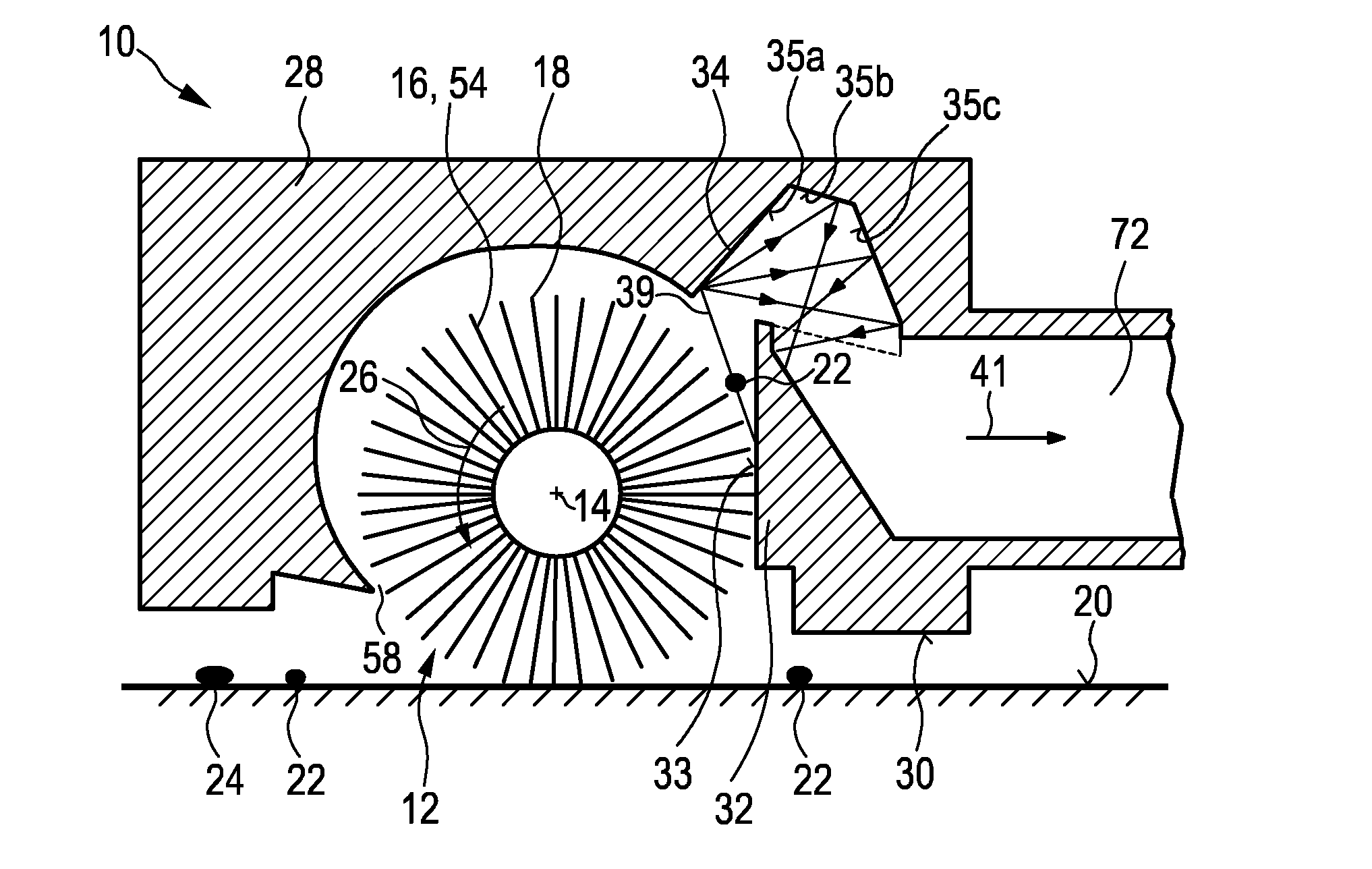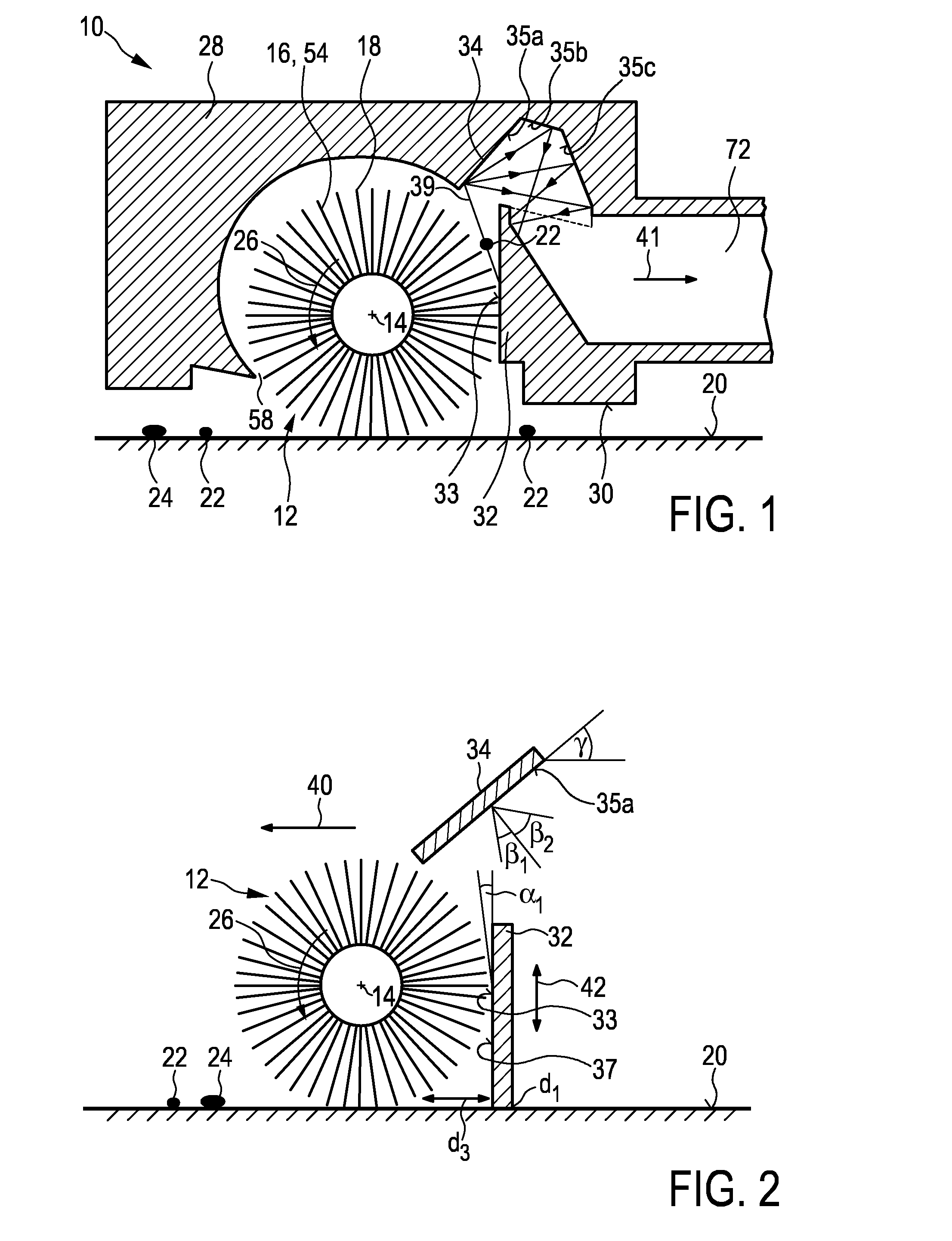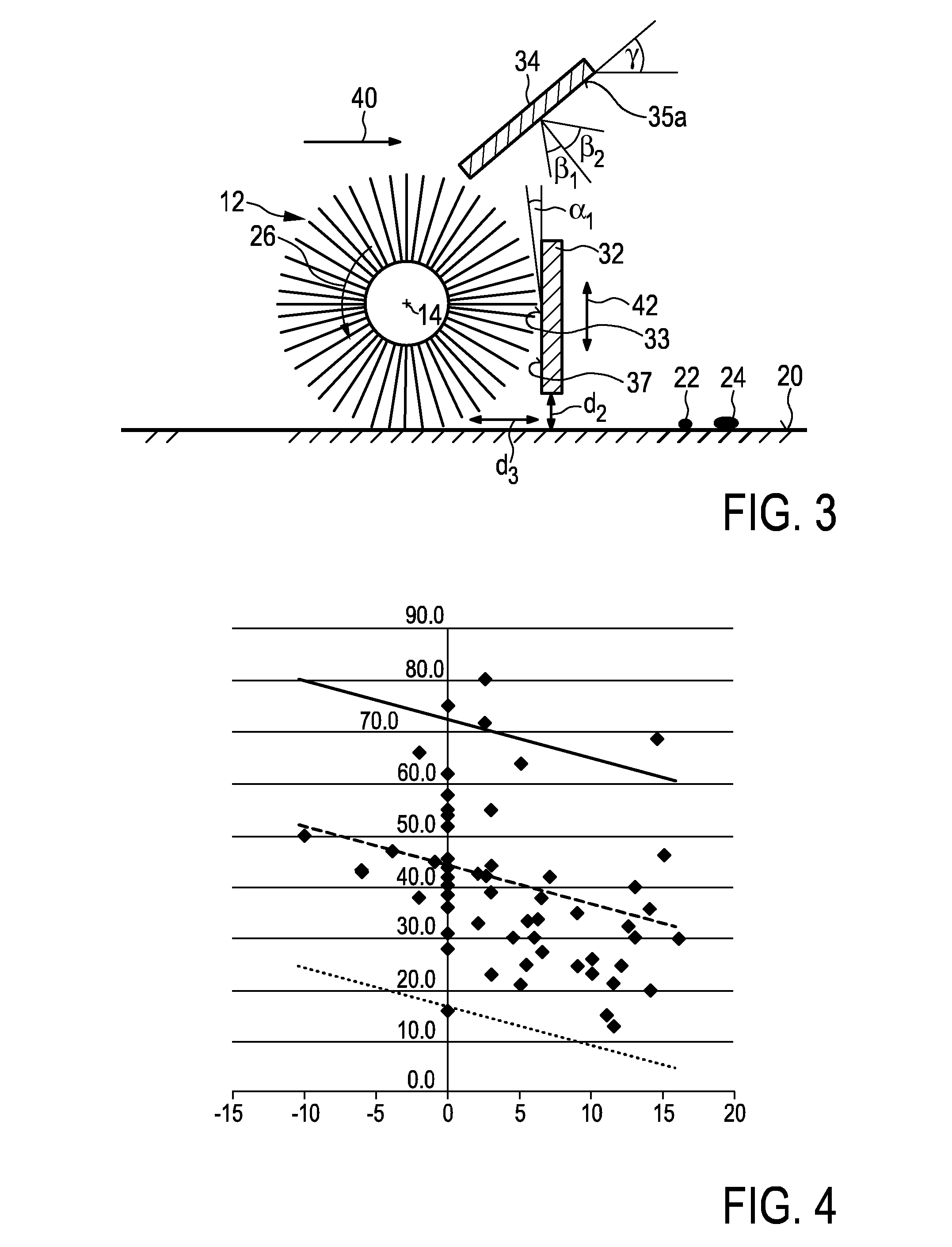Cleaning device having a nozzle for cleaning a surface
a cleaning device and cleaning nozzle technology, which is applied in the direction of vacuum cleaners, carpet cleaners, floor sweeping machines, etc., can solve the problems of dirt particles scattered in the housing in unpredictable ways, dirt particles are not picked up, and the vacuuming effect is not good, so as to improve the cleaning effect and speed up the removal of liquid. , the effect of increasing the capillary force of the brush
- Summary
- Abstract
- Description
- Claims
- Application Information
AI Technical Summary
Benefits of technology
Problems solved by technology
Method used
Image
Examples
first embodiment
[0105]FIG. 1 shows a schematic cross-section of a nozzle arrangement 10 of a cleaning according to the present invention. The nozzle arrangement 10 comprises a brush 12 that is rotatable about a brush axis 14. Said brush 12 is provided with flexible brush elements 16 which are preferably realized by thin microfiber hairs. The flexible brush element 16 comprises tip portions 18 which are adapted to contact a surface to be cleaned 20 during the rotation of the brush and to pick-up dirt particles 22 and / or liquid particles 24 from said surface 20 (floor 20) during a pick-up period when the brush elements 16 contact the surface 20.
[0106]Further, the nozzle arrangement 10 comprises a drive means, e.g. a motor (not shown) for driving the brush 12 in a predetermined direction of rotation 26. Said drive means are preferably adapted to realize a centrifugal acceleration at the tip portions 18 of the brush elements 16 which is, in particular during a dirt release period when the brush element...
second embodiment
[0128]FIG. 6 shows the second deflector element 34 according to the present invention. In contrast to the embodiment shown in FIGS. 5a and 5b, the second deflector surface 35′ has a rounded shape. The second deflector surface 35′ is designed as a curved surface that faces into the exhaust channel 41. Similar as before, the shape of this curved surface 35′ is configured to guide the dirt and / or liquid particles 22, 24 that are released from the brush 12 at the first deflector surface 33 into the exhaust channel 41. An exemplary trajectory 39f is shown to illustrate that such a curved surface 35′ causes a very similar deflection behavior of the dirt particles 22 as the planar deflector surfaces 35a-c.
[0129]FIGS. 2 and 3 illustrate a further function of the first deflector element 32. The first deflector element 32 also has the function to act as a so-called bouncing element. It ensures that dirt and / or liquid particles 22, 24, which are already released from the brush 12 as soon as t...
PUM
 Login to View More
Login to View More Abstract
Description
Claims
Application Information
 Login to View More
Login to View More - R&D
- Intellectual Property
- Life Sciences
- Materials
- Tech Scout
- Unparalleled Data Quality
- Higher Quality Content
- 60% Fewer Hallucinations
Browse by: Latest US Patents, China's latest patents, Technical Efficacy Thesaurus, Application Domain, Technology Topic, Popular Technical Reports.
© 2025 PatSnap. All rights reserved.Legal|Privacy policy|Modern Slavery Act Transparency Statement|Sitemap|About US| Contact US: help@patsnap.com



